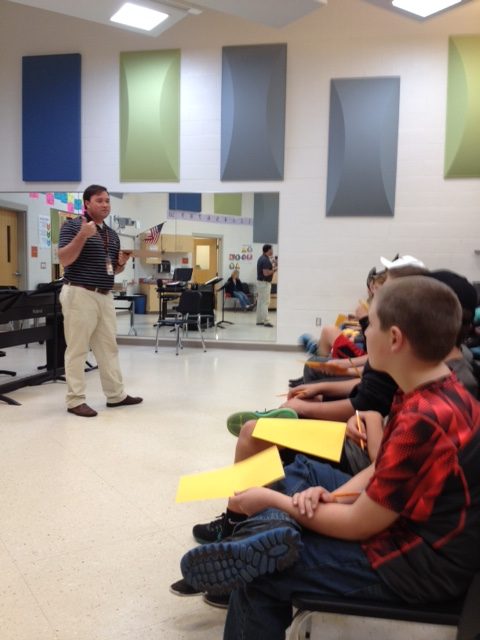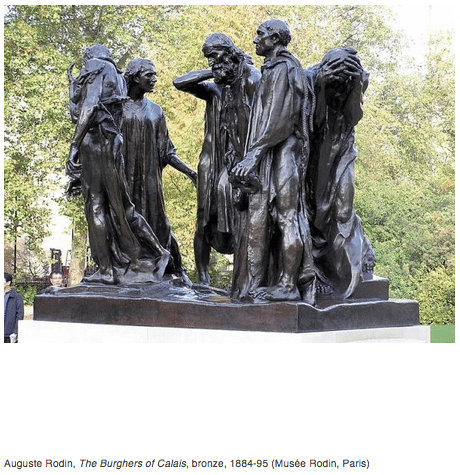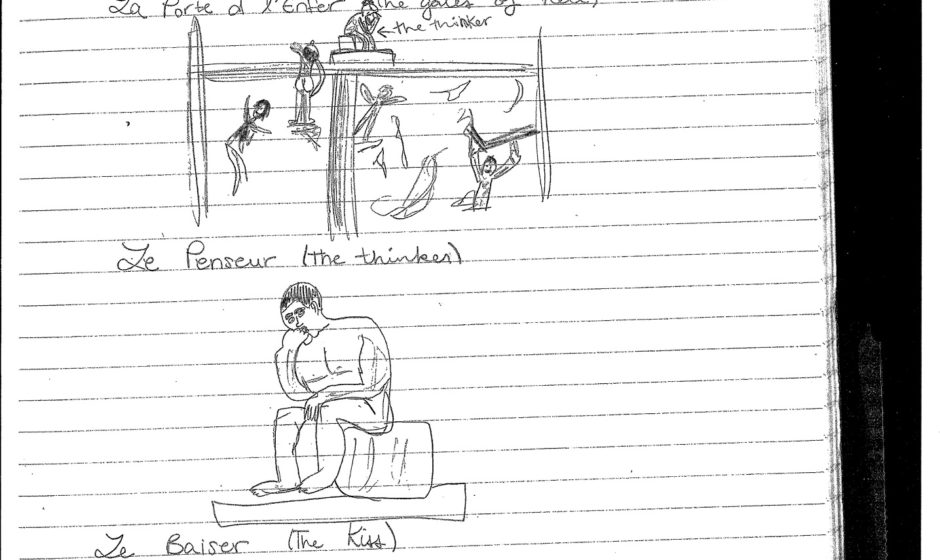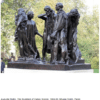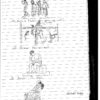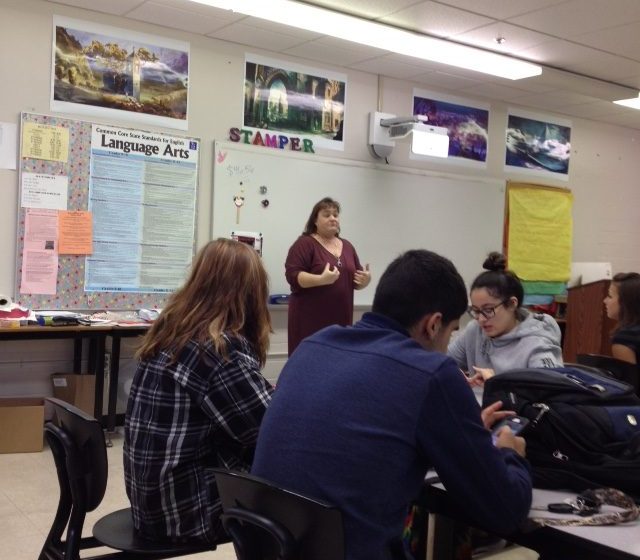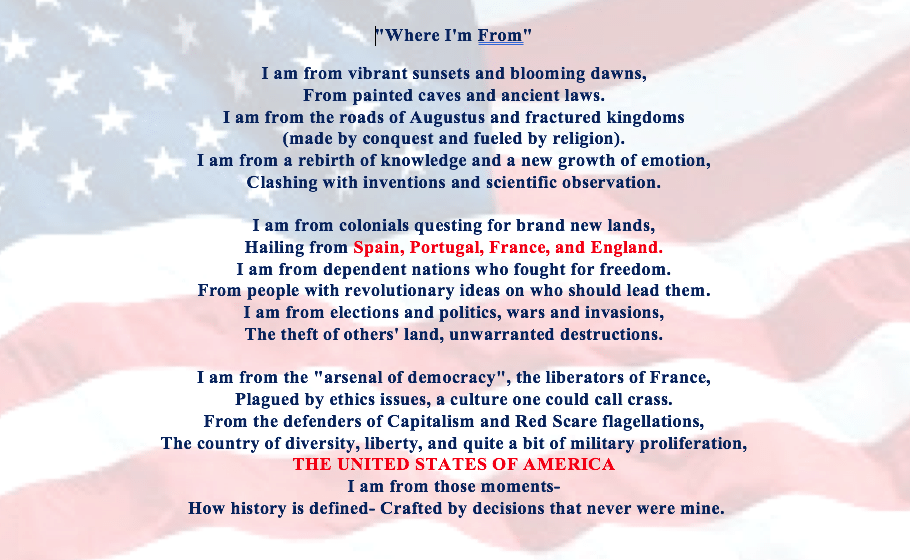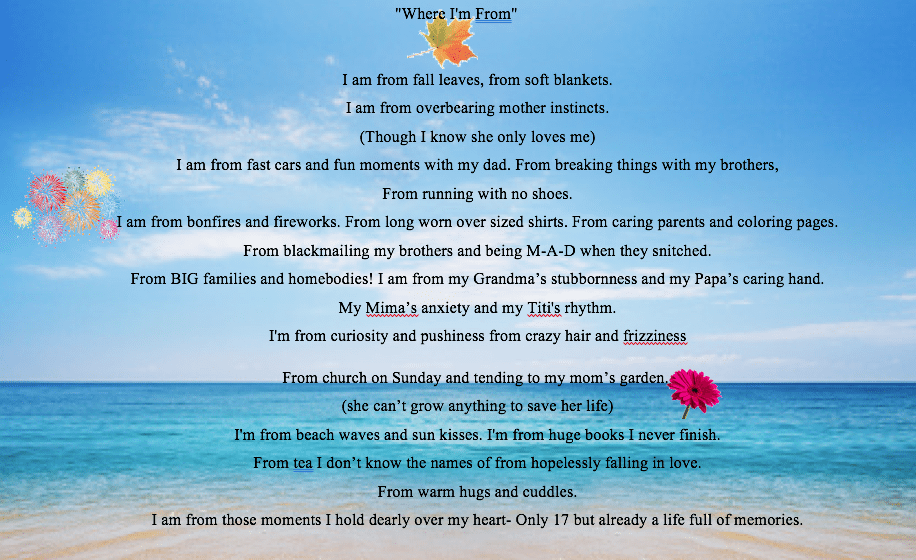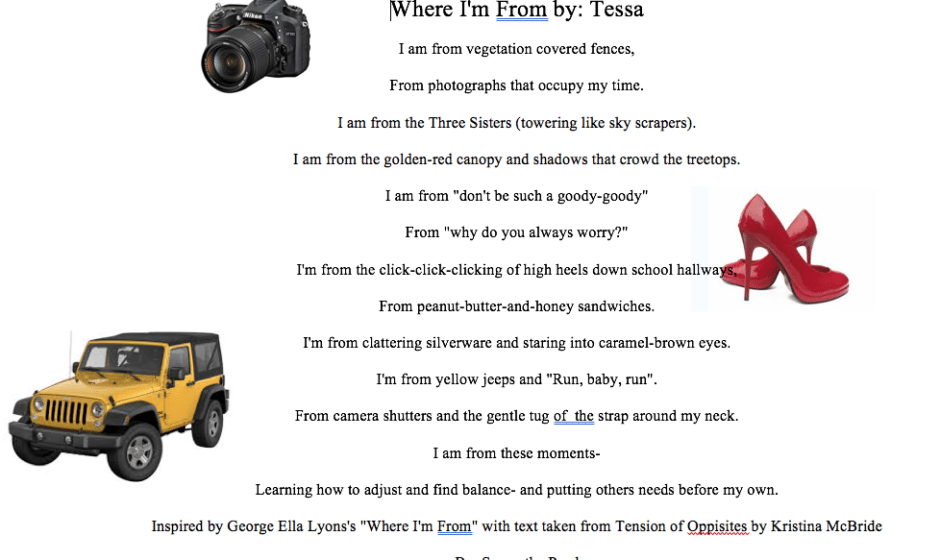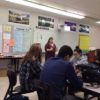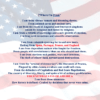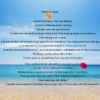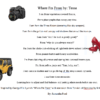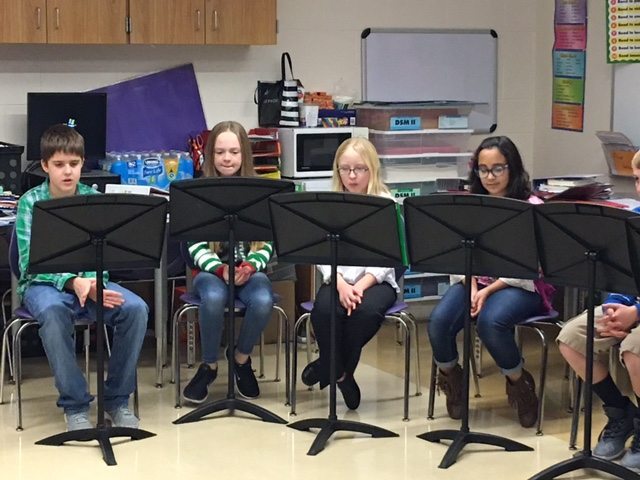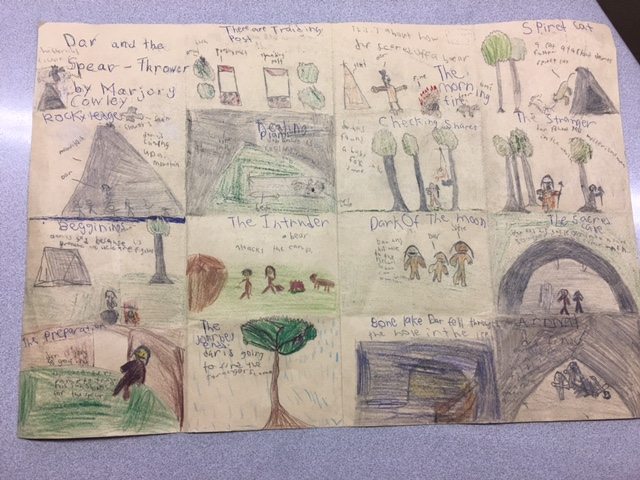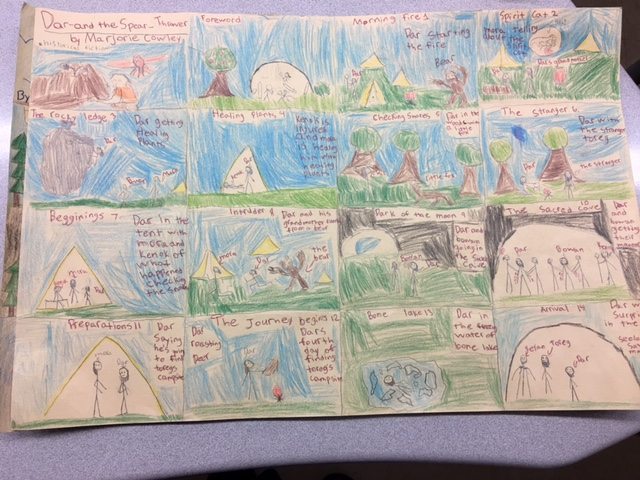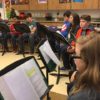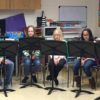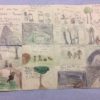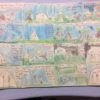Please Note
• You may print this page if you wish.
• Song titles appear in italic type. Required cast appears in (parenthesis).
• “AIS2” means Act One, Scene Two; “AIIS3” means Act Two, Scene Three, and so on.
• Dancing is the name of a specific song/production number in this show (it is not a generic term). When Dancing appears on the rehearsal schedule, it is attended by those performers who had Dancing listed on their casting letters.
• Although the production number The Waiters’ Gallop was not listed on any casting letters, all of the gentlemen with the song Hello Dolly listed on their letter are also in The Waiters’ Gallop.
• We will be “dark” – meaning no rehearsal – on most Fridays. This means Muse performers have most Friday, Saturday and Sunday nights free!
• “Tutti” means the entire cast.
• When a specific character is listed, both the principle and understudy actors for that role attend rehearsal.
• Parade Kids are primarily younger members of the cast who specifically had the term Parade Kids on their casting letters. The name Parade Kids will appear if they are required at a rehearsal.
• “Rehearsal” means a complete run-through of the show.
October
THURS, OCT 19
4:30-6:00
Costume measurements for all cast members (including Parade Kids) and PAs.
6:00-7:30
Parent Orientation Meeting (students will be taken from the measurement area on the third floor to join the meeting in progress).
FRI, OCT 20
Dark
SAT, OCT 21
10:00-1:00
Dancing pgs 35-38
(Dancing performers; minus Barnaby, Cornelius, Molloy, Minnie, Dolly)
10:00-1:00
Elegance pgs 43-44
(Barnaby, Cornelius, Molloy, Minnie)
1:00-2:00
Lunch break
2:00-5:00
Dancing pgs 35-38
(Dancing performers, Barnaby, Cornelius, Molloy, Minnie; minus Dolly)
2:00-4:00
Dolly vocal session
4:00-5:00
Vandergelder vocal session
SUN, OCT 22
1:00-5:00
Dancing pgs 35-38
(Dancing performers; add Barnaby, Cornelius, Molloy, Minnie at 4:00; minus Dolly)
1:00-4:00
Barnaby, Cornelius, Molloy, Minnie vocal session
1:00-2:00
Dolly vocal session
MON, OCT 23
4:30-7:00
Table Read (All cast members and PAs should attend. Parade Kids are not required to attend)
7:00-8:30
Company vocal session (All cast members; minus Parade Kids)
TUES, OCT 24
4:30-6:30
Sunday Clothes pgs 16-18
(Cornelius, Barnaby, Dolly, Ermengarde, Ambrose; no Sunday Clothes performers)
6:30-8:30
AIS3 scene after Ribbons and up to Motherhood March pgs 23-31
(Barnaby, Cornelius, Molloy, Minnie, Vandergelder, Dolly)
WED, OCT 25
4:30-8:30
AIS3 scene after Ribbons up to Dancing, includes Motherhood March pgs 23-35
(Barnaby, Cornelius, Molloy, Minnie, Vandergelder, Dolly)
THURS, OCT 26
4:30-8:30
Opening/I Put My Hand In pgs 1-4
(I Put My Hand In performers, Dolly, Ambrose, Kemper)
FRI, OCT 27
Dark
SAT, OCT 28
10:00-1:00
Waiter’s Gallop pgs 46-52
(Waiters’ Gallop performers – see note at top of this webpage; minus Barnaby, Cornelius, Molloy, Minnie, Vandergelder, Ernestina)
10:00-1:00
AIS2 incl It Takes A Woman pgs 6-18
(Vandergelder, Ermengarde, Barnaby, Cornelius, Dolly, Ambrose; minus the other It Takes A Woman performers)
1:00-2:00
Lunch break
2:00-5:00
Waiter’s Gallop pgs 46-52
(Waiters’ Gallop performers; minus Barnaby, Cornelius, Molloy, Minnie, Vandergelder, Ernestina)
2:00-4:00
Elegance pgs 43-44; AIS3 up to Dancing (incl Ribbons and Motherhood March) pgs 19-35
(Barnaby, Cornelius, Molloy, Minnie, Dolly, Vandergelder)
SUN, Oct 29
1:00-5:00
Hello Dolly pgs 53-55
(Hello Dolly performers; add Dolly at 4:00)
2:00-5:00
Vocal session
(Dolly, Vandergelder, Molloy, Minnie, Barnaby, Cornelius)
MON, OCT 30
4:30-8:30
Waiters’ Gallop and Hello Dolly pgs 46-55
(Hello Dolly performers, Barnaby, Cornelius, Molloy, Minnie, Vandergelder, Ernestina, Dolly)
TUES, OCT 31
4:30-8:30
Opening/I Put My Hand In pgs 1-4
(I Put My Hand In performers, Dolly, Ambrose, Kemper)
November
WED, NOV 1
4:30-6:30
Opening/I Put My Hand In pgs 1-4
(I Put My Hand In performers, Dolly, Ambrose, Kemper)
6:30-8:30
It Takes A Woman pgs 8-10
(It Takes A Woman performers, Vandergelder, Barnaby, Cornelius)
THURS, NOV 2
4:30-7:30
It Takes A Woman pgs 8-10
(It Takes A Woman performers, Vandergelder, Barnaby, Cornelius)
7:30-8:30
AIS2 incl It Takes A Woman pgs 6-18
(It Takes A Woman performers, Vandergelder, Ermengarde, Barnaby, Cornelius, Dolly, Ambrose)
FRI, NOV 3
Dark
SAT, NOV 4
10:00-1:00
Act One through Dancing pgs 1-38
(Tutti; minus Parade Kids)
1:00-2:00
Lunch break
2:00-5:00
Act One through Dancing pgs 1-38
(Tutti; minus Parade Kids)
SUN, NOV 5
1:00-5:00
Sunday Clothes pgs 16-18
(Sunday Clothes performers, Cornelius, Barnaby, Dolly, Ermengarde, Ambrose)
Remember to set clocks back this morning!
MON, NOV 6
4:30-6:30
Sunday Clothes pgs 16-18
(Sunday Clothes performers, Cornelius, Barnaby, Dolly, Ermengarde, Ambrose)
6:30-8:30
Before The Parade vocals
(Before the Parade performers, Dolly; minus Parade Kids)
TUES, NOV 7
4:30-8:30
Sunday Clothes pgs 16-18
(Sunday Clothes performers, Cornelius, Barnaby, Dolly, Ermengarde, Ambrose)
WED, NOV 8
4:30-8:30
AIIS2 pgs 46-61
(Only speaking characters at this rehearsal: Rudolph, Barnaby, Cornelius, Molloy, Minnie, Vandergelder, Ernestina, First Cook, Stanley)
4:30-8:30
Holiday Concert rehearsal
Cast, orchestra and PAs in grades 8 and above may perform in the Muse holiday concert as a part of the Tree Lighting at The Greene for thousands of audience members! Watch for details on the Backstage page of musemachine.com.
THURS, NOV 9
4:30-8:30
Before The Parade pgs 39-40
(Before the Parade performers, Dolly; minus Parade Kids)
FRI, NOV 10
Dark
SAT, NOV 11
This morning is the Advance Ticket Sale for families of cast, orchestra and PAs. Details appear on the Backstage page of musemachine.com.
Everything that was originally scheduled on this day now happens one hour earlier, to make arrival more convenient for parents attending the 9am meeting and ticket sale.
All families are also asked to drop beverages this morning: one case of soda or water (whatever your student likes to drink with meals). Beverages will be used for student meals during the tech and performance weekends. A parent will collect beverages curbside.
9:00-noon
Before The Parade pgs 39-40
(Before the Parade performers, Dolly; minus Parade Kids)
9:00-noon
Various scenes
(Barnaby, Cornelius, Molloy, Minnie)
noon-1:00
Lunch break
1:00-4:00
Before The Parade pgs 39-40
(Before the Parade performers, Dolly; minus Parade Kids)
SUN, NOV 12
1:00-3:00
Before The Parade pgs 39-40
(Parade Kids only)
3:00-6:00
Holiday Concert rehearsal
MON, NOV 13
4:30-6:30
AIIS2 scenework
(Dolly, Vandergelder, Barnaby, Corneius, Molloy, Minnie)
6:30-8:30
AIIS2 scenework
(Dolly, Vandergelder)
6:30-8:30
Music session
(The following performers are needed: Ben K., Diane, Gabby, Julie, Kiama, Marisha, Noah, Steven, Tommy)
TUES, NOV 14
4:30-8:30
AIIS3 incl It Only Takes A Moment, So Long Dearie pgs 62-67
(Judge, Dolly, Vandergelder, Rudolph, Ernestina, Barnaby, Corneius, Molloy, Minnie, Ambrose, Ermengarde, Clerk, Policeman, selected Waiters, Cooks and Polka performers from previous scene. These are the selected Waiters, Cooks and Polka performers: Abbey F., Ashley, Ben T., Christopher, Fischer, Gabby, Julie, Marisha, Milan, Noah, Zoe.
WED, NOV 15
4:30-7:00
AIIS2,3 incl Waiters’ Gallop, Hello Dolly, It Only Takes A Moment, So Long Dearie pgs 46-67
(Judge, Dolly, Vandergelder, Rudolph, Ernestina, Barnaby, Corneius, Molloy, Minnie, Ambrose, Ermengarde, Clerk, Policeman, Hello Dolly performers, Polka performers)
7:00-8:30
Holiday Concert rehearsal
THURS, NOV 16
4:30-8:30
Holiday Concert rehearsal
FRI, NOV 17
Dark
SAT, NOV 18
10:00-11:30
Polka pgs 60-61
(Polka performers, Ambrose, Ermengarde, Barnaby, Cornelius, Molloy, Minnie)
11:30-12:30
Lunch break
12:30-4:30
Holiday Concert rehearsal
4:30
Travel to Greene
5:30-6:00
Perform at Greene Tree Lighting Event
SUN, NOV 19
1:00-2:30
Before The Parade pgs 39-40
(Parade Kids only)
2:30-5:00
Polka pgs 60-61
(Ambrose, Ana S, Ermengarde, Barnaby, Cornelius, Molloy, Minnie, Polka performers. As a reminder, the Polka performers are Abbey, Ashley S, Ben H, Ben K, Cameron, Charlotte, Christopher, Darian, Gabby, Jayla, Jarred, Julie, Kiama, Marisha, Michael T, Nick, Steven, Tommy, Zoe)
MON, NOV 20
4:30-8:30
Act One
(Tutti; Parade Kids 4:30-6:00; All speaking characters must be off book!)
TUES, NOV 21
4:30-8:30
Act Two
(Barnaby, Cornelius, Molloy, Minnie, Rudolph, Vandergelder, Ernestina, Dolly, Ambrose, Ermengarde, Hello Dolly performers, Polka performers, Judge, Clerk, Policeman. We are not yet doing the finale, so not all performers are required at this rehearsal. Check the scenes and roles listed.)
WED, NOV 22
Thanksgiving Break
THURS, NOV 23
Happy Thanksgiving!
Thanksgiving Break
FRI, NOV 24
Thanksgiving Break
SAT, NOV 25
Thanksgiving Break
Happy Birthday, Joe Deer!
SUN, NOV 26
Thanksgiving Break
MON, NOV 27
4:30-8:30
Dance and music review
(Tutti; minus Parade Kids)
TUES, NOV 28
4:30-8:30
AIIS4 pgs 68-74
(Vandergelder, Barnaby, Cornelius, Molloy, Minnie, Dolly, Ambrose, Ermengarde; no additional performers)
WED, NOV 29
4:30-8:30
AIS3 pos 19-41
(Minnie, Molloy, Barnaby, Cornelius, Dolly, Vandergelder)
4:30-6:00
Dancing and Polka
(Dancing performers and Polka performers)
6:00-8:30
Waiters’ Gallop and Hello Dolly
(Waiters’ Gallop/Hello Dolly performers)
6:30-8:30
Hello Dolly
(additional Hello Dolly performers – these people have been individually notified)
THURS, NOV 30
4:30-6:30
Hello Dolly
(All Hello Dolly (the song) performers, including the newly added female performers)
6:30-8:30
AIIS2&3
(All performers in the restaurant scene and the courtroom scene)
December
FRI, DEC 1
Dark
SAT, DEC 2
10:00-1:00
AI and AIIS1 pgs 1-45
(Tutti including Parade Kids)
1:00-2:00
Lunch break
2:00-5:00
AI and AIIS1 pgs 1-45
(Tutti; minus Parade Kids)
This is the press photo day. All company members (cast, Parade Kids, orchestra and PAs) should plan to attend. More specific details will be released nearer the actual date.
SUN, DEC 3
1:00-5:00
AIIS2-4 pgs 46-74
(Tutti; minus Parade Kids)
MON, DEC 4
4:30-8:30
Act One
(Tutti; minus Parade Kids)
TUES, DEC 5
4:30-8:30
Act Two
(This rehearsal requires all male performers, female performers with speaking roles, female performers in the song Hello Dolly, female performers in Polka; no Parade Kids)
WED, DEC 6
4:30-8:30
Act One – understudy focus
(Tutti; Parade Kids 4:30-6:00)
THURS, DEC 7
4:30-8:30
Act Two – understudy focus
(This rehearsal requires all male performers, female performers with speaking roles, female performers in the song Hello Dolly, female performers in Polka; no Parade Kids)
FRI, DEC 8
Dark
SAT, DEC 9
10:00-1:00
Rehearsal
(Tutti; minus Parade Kids)
1:00-2:00
Lunch break
2:00-5:00
Rehearsal
(Tutti; minus Parade Kids)
SUN, DEC 10
1:00-2:00
(Dolly, Barnaby, Cornelius, Molloy, Minnie)
2:00-5:00
Rehearsal
(Tutti; minus Parade Kids)
MON, DEC 11
4:30-8:30
Finale
(Tutti; minus Parade Kids)
TUES, DEC 12
4:30-8:30
Finale
(Tutti; minus Parade Kids)
Happy Hanukkah!
WED, DEC 13
4:30-8:30
Rehearsal
(Tutti; minus Parade Kids)
THURS, DEC 14
4:30-8:30
Sitzprobe
(Tutti; minus Parade Kids)
The Sitzprobe is a concert version of the musical numbers from the show combining the cast and orchestra.
FRI, DEC 15
Dark
SAT, DEC 16
10:00-11:00
Orchestra arrive/rehearse
11:00-1:00
Rehearsal: cast with orchestra
(Tutti; minus Parade Kids)
1:00-2:00
Lunch break
2:00-5:00
Rehearsal: cast with orchestra
(Tutti; minus Parade Kids)
SUN, DEC 17
11:00-2:00
Rehearsal – understudy focus
(Tutti; minus Parade Kids)
The Winter Dance is this evening. Watch for more info on the Backstage page of musemachine.com!
MON, DEC 18
4:30-5:30
Notes for Understudy Performance
(Tutti: minus Parade Kids)
5:30-8:30
Understudy Performance
(Tutti: minus Parade Kids)
This is the tentative Understudy Performance. Families of the understudy cast are invited to attend via RSVP on the Backstage page at musemachine.com. Non-flash photos are welcomed; NO video. Entire cast (minus Parade Kids) must attend.
TUES, DEC 19
4:30-8:30
Rehearsal
(Tutti; Parade Kids 4:30-6:00)
DEC 20—Jan 2
Winter Break
Merry Christmas!
Happy Kwanza!
Happy New Year!
January
WED, JAN 3
4:30-9:00
Rehearsal
(Tutti; minus Parade Kids)
THURS, JAN 4
5:00-10:00
Rehearsal: primarily Act One spacing
(Tutti; Parade Kids 5:00-8:00)
From this date forth, all rehearsal are held at the Victoria Theatre except January 8.
FRI, JAN 5
5:00-10:00
Rehearsal: primarily Act Two spacing
(Tutti; minus Parade Kids)
SAT, JAN 6
10:00-10:00
Tech Rehearsal (Act One x2) with costumes and make-up
(Tutti)
Dinner provided between rehearsals.
SUN, JAN 7
10:00-10:00
Tech Rehearsal (Act Two x2) with costumes and make-up
(Tutti; minus Parade Kids)
Dinner provided between rehearsals.
MON, JAN 8
4:30-8:30
Rehearsal
(Tutti; minus Parade Kids)
This rehearsal is in the Muse Studio.
TUES, JAN 9
5:00-10:00
Rehearsal with tech, costumes and make-up
(Tutti)
All remaining rehearsals and performances are in the Victoria Theatre – tutti!
WED, JAN 10
5:00-10:00
Rehearsal with tech, costumes and make-up
(Tutti)
THURS, JAN 11
Performance: Opening Night
6:00: Call
7:00: Curtain
10:30: End
FRI, JAN 12
Performance
7:00: Call
8:00: Curtain
11:30: End
SAT, JAN 13
Performances
2:00: Call
3:00: Curtain
*Dinner provided between performances
7:00: Call
8:00: Curtain
11:00: End
SUN, JAN 14
Performance
1:00: Call
2:00: Curtain
5:00: End
